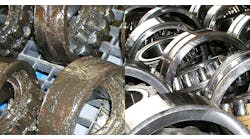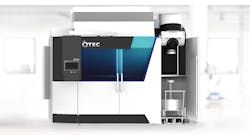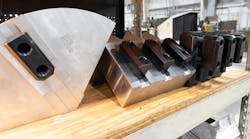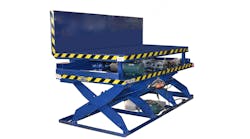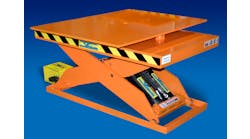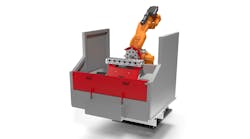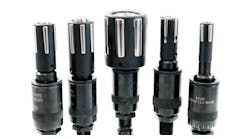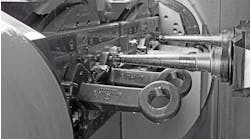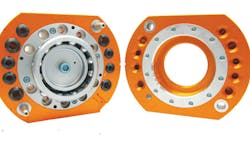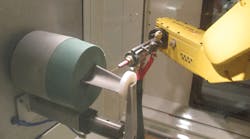For all the increased power, and convenience, that robotic automation provides to forgers, there is a particular challenge to plant operators: staying up-to-date with the technology of robotics requires an increasing level of specialty. Someone in the forging operation has to be dedicated to robotics expertise.
Short of hiring, or being, such an expert, it's helpful to classify of robotics technology in practical terms – or sub-specialties, and track the developments in each one. For example,
Programming — Automation programming has followed the wider trends in programming and network technology: it’s increasingly visual and intuitive. More important, program software is increasingly focused for use by non-experts. Early this month, ABB Robotics introduced RobotWare 6, its robot controller software that provides greater flexibility and reliability to manufacturers, and with an extensive toolbox for developers, plus numerous communications functions. These improvements influence programming and control of robotic systems and equipment, and maintain motion control and safety factors.
RobotWare 6’s installation features are improved too, including “Installation Manager,” with its a flexible application licensing mechanism for developers, and an intuitive user interface that vastly improves robot set-up time and system reconfiguration.
“ABB has always taken pride in the power and flexibility of its Rapid programming language,” according to product technology manager Nick Hunt. “Now with the release of RobotWare 6, programmers have an even more impressive palette of Rapid design tools and sensor interface capabilities at their disposal.”
Fixtures and Tools — The function of a robot is defined by its design and programming, but its effectiveness hinges on the end-of-arm tooling. EOT expert ATI Industrial Automation regularly presents new and updated fixtures and functionalities, including its new lateral and pivoting compliance devices that allow compliance in multiple directions. For grinding or finishing cells, two new series of compensators allow pieces to be gripped or routed reliably even if the workpiece is misaligned. The LCC and PCC compliance devices provide high-endurance and high repeatability, and have superior guidance that allows for high moment loads in a compact work envelope.
It also has new tool changer models, including QC-160 for most 200 kg robots, and QC-18 electrically actuated and QC-001 micro tool changer for high-speed "spider" or delta robots. These tool changers are designed to function reliably for millions of cycles at rated load while maintaining extremely high repeatability. Other tools worth understanding include utility couplers, which are designed for applications where there is a need to connect/disconnect utilities (air, fluid, power, and electrical signals) quickly.
Interactivity and Safety — Much of the technological progress in robotics has to do with machines that are adaptive and reactive enough to work alongside other robots, or machines, or people. In forging operations, this potentiality merely underscores the importance of robotics safety standards.
Recently, Darren Whittall, a Fanuc technical manager in the U.K., offered a checklist for establishing and maintaining worker safety standards to avoid robot-related accidents when humans share the workspace.
1. Scope out all potential hazards: Safety risks vary according to the robot and application. Start with a well-documented risk assessment, and note that most accidents happen in non-operating situations, e.g. operators in the cell to program, perform maintenance, testing, set-up, or adjustments.
2. Revisit regulations: International standards for robotics safety are set out in EN ISO 10218-Part 1 Robots and robotic devices-Safety requirements for industrial robots; EN ISO 10218-Part 2 details robot systems and integration.
3. Use simulation software to plan out and test robotic concepts.
4. Introduce safeguards. Seek expert guidance when building a safety-related control system (SRCS), including whether your SRCS should be a dedicated system or integrated within your robot controller or robot safety software.
5. Provide employees with clear instructions.
6. Consider the cost benefit and effectiveness of software-enabled technology.
7. Create adaptive zones: It is possible to program, enable, and disable the zone that the robot can/cannot enter, depending on the task in-hand. This is especially useful for compact cells.
8. Define maximum robot speed; this can be done during normal operation or adjusted to a defined event, do an operator a work safely within the proximity of the robot.
9. Comply with machine safety standards.
10. Stay on top of your safety requirements. In modern manufacturing, robotic workcells and plant layouts evolve quickly. It means constantly revisiting and modifying your safety considerations. With software being more flexible and simpler to upgrade and integrate, software-based robotics will becomes more effective.


